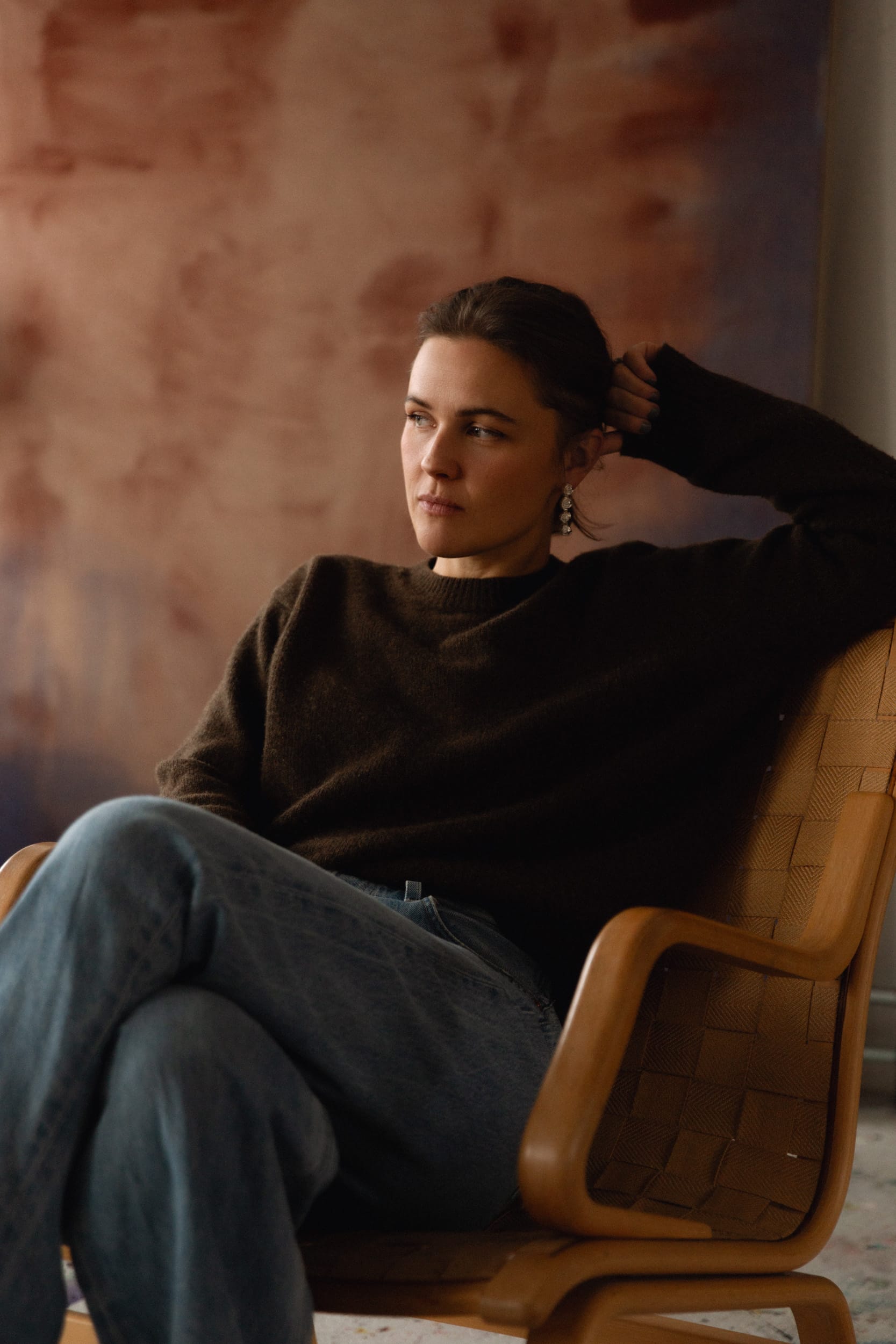Diana
Supreme: A short history of Diana Ross’ hair.

Photograph by Victor Skrebneski/Michael Ochs Archives/Getty Images

Photograph by CBS Photo Archive/Getty Images
“In almost every photo session, I tried to change my hair.”
Throughout the 1960s, the Supremes topped the charts with a barrage of hits, from “Baby Love” to “My World is Empty Without You” to “I Hear a Symphony.”
They also dazzled audiences with their head-to-toe style. Motown Records’ premiere girl group didn’t have the hundred-thousand-dollar glam squads today’s stars have up their sleeves, but Diana Ross, Mary Wilson and Florence Ballard made do. They relied on curling irons and jars of hair goo, along with an extensive wig collection. If their shoes were a different color than their fleet of slinky evening gowns, they would dye them to match.
Ross, the rising star of the trio, went on to pursue solo singing and acting careers. But through her many seasons in the spotlight, she hasn’t been allowed to have bad hair days. Whether she’s come off a long flight, been battling the flu or nursing a broken heart, her fans have always expected her to step out looking like a million dollars—with interest.
In her memoir, Secrets of a Sparrow, Ross writes that the quest for low-budget perfection came naturally to her, dating back to her early years in Detroit’s Brewster-Douglass Housing Projects. “I had always been good at doing hair,” she recalls. “I remember that my mother had been adept at using the curling irons, and I must have picked it up from her.” Ross would place the metal implements atop a fire on the stove, and practice on her own hair, “Twist[ing] and turn[ing] those curlers and hav[ing] them literally dancing in my hands.” Then—once the Supremes started singing as a trio—she began to make over bandmates Wilson and Ballard, using styles cadged from magazines and TV shows. “Another part of our signature look was the beautiful gowns we wore,” she writes. “Even as teenagers, we had a sense of sophistication that made us stand out from other performers.”
Juliette Harris, my co-editor on Tenderheaded: A Comb-Bending Collection of Hair Stories, remembers the Supremes’ early days from her own childhood in Virginia. “Whenever they would play a major city, the marketing and promotion people would contact the local radio station and let the kids know,” says Harris. “The Supremes were arriving in two hours at the Richmond airport, and I got my mother to take me. They were dressed very chic: heels and stockings, bouffant wigs, and they carried round hat boxes.” Harris asserts that instead of hats, those boxes were actually carefully layered with wigs.
The Supremes sported the hairstyles of the era: the beehive, the bob, and the flip. At the time, Harris says, she grooved to their music but never copied their hair: “I admired that they—and [jazz singer] Nancy Wilson—were young black women who were being portrayed as glamorous,” she says, “but I always wanted to look more bohemian.” But over the years, Ross has rocked all the looks: From big and poufy to face-framing sleek; from afros and braids to pixie cuts and wedges; from long to short to curly and straight—and occasionally with oodles of ornaments. “In almost every photo session, I tried to change my hair,” Ross reveals in Secrets of a Sparrow. And by changing her hair, she means (mostly) changing her wig.
Betty Brandly, a hairstylist in Long Beach, California, remembers a time when black women got dinged for wearing what was then referred to as store-bought hair: “People would point if they knew you had a wig on, or a piece in your hair,” says Brandly, who owns Twist N Shout salon. “Ross helped bridge that gap, that stigma of not being able to wear anything that wasn’t your hair.”
Mikki Taylor, author of the new book Editor in Chic: How to Style and Be Your Most Empowered Self, agrees. “Ross lives in a judgment-free zone. That’s what gives her a sense of vibrancy,” she says. “If you want to wear 22 inches of curly hair, shave your head or put on two pairs of false eyelashes, you’re living the one life that belongs to you!”

Photograph by Harry Langdon/Getty Images

Photograph by Harry Langdon/Getty Images
“If you want to wear 22 inches of curly hair, shave your head or put on two pairs of false eyelashes, you’re living the one life that belongs to you.”
Taylor has styled Ross on several occasions. The first time was in 1982, when Taylor was on staff as Essence’s beauty editor and helmed the publication’s cover shoots. She recalls one shoot with Ross, for a holiday issue, set around New York landmarks. They set up a scene in Times Square, and people began to recognize the woman at the center of it all. Initially, they milled about, but then began to close in. Taylor worried that the crush of fans might not only unnerve Ross but also ruin the photos. “Someone else would have been scared, but Miss Ross was perfectly comfortable with the people,” Taylor recalls. “They’re all right, it’s all right,” she assured Taylor. On the cover, Ross’ wet curls evoked “a raw, different kind of glamour,” says Taylor, now editor at large at Essence. “You didn’t see wet hair on covers back then.”
For many black women, water is a hairstyle’s sworn enemy. Black women rarely wash-and-go; we wash, style, dry and ride it out for a week or two—or, yikes, three—before rinsing and repeating. So to Brandly, the Long Beach hairstylist, Ross deserves bonus points for being a swimmer: “She’s not afraid of water. She likes to swim, and I do, too. She was on the swim team in high school,” Brandly says. “She was doing it way back then, and that to me says a lot.”
If you lay all the diva’s moments end to end, the one that would take center stage involves Ross and a ton of water. It was the free concert that she attempted to give to nearly 450,000 fans on Central Park’s Great Lawn in July 1983—only Mother Nature did not warn her that thunder, lightning, and more than two inches of rain were also on the bill that night.
It was a stressful evening. As Ross tried to outshine the rain, TV audiences around the country watched her get drenched by the flash storm—and fretted over the wired microphone in her hand, and the electrical equipment surrounding her. “Everybody was worried,” says Taylor, “but she is fearless. When she was singing ‘Ain’t no mountain high enough… no wind, no rain, can stop me, babe’ you couldn’t ask for a better metaphor for being your authentic self. Anybody else would’ve been ushered off the stage by bodyguards, but she stayed till everyone was out of the park safely, and the lights were out.”
For a stretch of years in the 1970s, Ross nabbed attention for a string of feature films: Lady Sings the Blues, Mahogany and The Wiz. The last of these was the least successful in terms of critical acclaim, perhaps because it had to stand up to the classic source material, The Wizard of Oz. The Wiz, like its predecessor, was about a girl named Dorothy who is blown far from home, and who can only find her way back through a tortuous path that involves gleaning key life lessons. In a short afro and simple white dress, Ross, then 34, played Dorothy as a schoolteacher from Harlem, amid an ensemble cast that included Michael Jackson as the Scarecrow and Richard Pryor as the Wiz. Time magazine was not impressed: “Banks will not back a big film unless the star is someone even a banker has heard of,” lamented critic John Skow. “Thus, when you want to cast a black version of The Wizard of Oz, you do not hold an audition for beautiful teenage black girls who can sing like crazy… you sign up Diana Ross.”
Mahogany and Lady Sings the Blues played more to Ross’ strengths. In the former, about a fame-drunk fashion designer, she spirals through a confection of hairstyles and hats, along with a beguiling wardrobe the singer herself dreamed up for the role. And in Lady Sings the Blues, Ross is totally believable—first as the young Billie Holiday with her hair in humble plaits, on up to her later strung-out performances as Lady Day, with clusters of flowers pinned into her upswept curls.
“If you want to wear 22 inches of curly hair, shave your head or put on two pairs of false eyelashes, you’re living the one life that belongs to you.”

Photograph by The LIFE Picture Collection/Getty Images

Photograph by Rob Verhorst/Redferns/Getty Images

Photograph by Harry Langdon/Getty Images
“She changed into a different wardrobe several times. She’s in her 70s now, and I thought that all that would’ve slowed down...”
It’s now been nearly 50 years since Ross played those parts and almost 60 since the Supremes’ debut. Ensconced on the West Coast, Ross still performs, but at a pace that works for her. Perhaps that’s because there is little to prove. As a member of the Supremes, she’s already in the Rock and Roll Hall of Fame, and named among Rolling Stone’s 100 Greatest Artists of All Time. She has a star on Hollywood’s Walk of Fame, and continues to be sampled by artists of her children’s generation, including Big Sean and Ariana Grande.
“I went to see her at the Hollywood Bowl this past year, where she was swinging from the stage with her big beautiful hair,” Brandly says. “She changed into a different wardrobe several times. She’s in her 70s now, and I thought that all that would’ve slowed down. But to be a celebrity on her level, it’s a part of the theatrics. And whenever you see her performing, there’s always going to be that big hair.”
Brandly has also caught Ross out and about. “I ran into her a couple of times at the farmers’ market in Hollywood,” she says. “When she’s there shopping she doesn’t have all that hair on, just some type of hat and glasses.” As a mother of five, with almost as many grandchildren, Ross admits to wading into the unglamorous realm of changing diapers, meting out discipline and making parental judgment calls that render even a superstar unpopular. “I am more a mother than a celebrity,” she writes in Secrets of a Sparrow.
Taylor, the Editor in Chic author, remembers being around when Ross’ mom was still alive. Though Ross and her siblings were raised in Detroit, the family is from the South, where the parenting style was strict and protective. Taylor observed this in the star’s approach to rearing her own kids: “She has an old-fashioned sensibility, no matter the modern world she walks in,” Taylor says. At the first fashion shoot Taylor did with Ross, the diva’s young daughters—Rhonda, Tracee and Chudney—were excitedly watching their mom being photographed (sons Evan and Ross were yet to be born). More recently, Taylor photographed Ross with her now-grown-up daughter, Tracee, an Emmy Award-winning actress on the TV series Black-ish. “Her kids say, ‘Mom, you were hot!’
That really tickles her,” Taylor says with a chuckle. “She loves being thought of as a hot mom.” But she’s also an involved parent, and stopped the conversation several times during one of Taylor’s interview sessions with her to call home and check on the boys.
My Tenderheaded co-editor Harris admits that even in this day and age, when women of all races use lace-front wigs and/or weaves to give them a polished appearance or a new look, she can still be judgy about “fake” hair—Ross’ included. But seeing gentle moments between the diva and her brood has softened Harris’ heart. “About a year ago, at one of those awards shows, all her kids and grandkids came on stage, and she looked like the earth mother that she is,” Harris declared. She also found herself moved when Ross participated as a coach on a reality TV show, where aspiring singers battle it out. “She was working with the young singers, and she was really nurturing to them,” she says.
Taylor, who remembers being hired a couple of times to style Ross, recalls that all the designers wanted to dress her, and would send her their latest couture in the hopes that she might be seen wearing them around town (or around the world), bringing star power to their brand.
“She was made for this,” says Taylor. “It’s her divine assignment. Other girls had Barbie, we had Miss Ross.”



